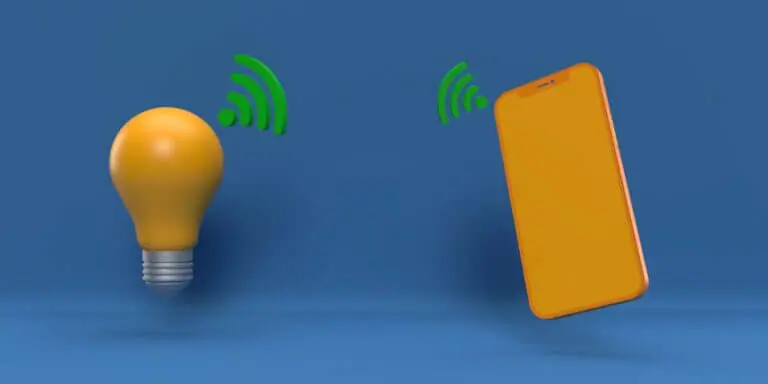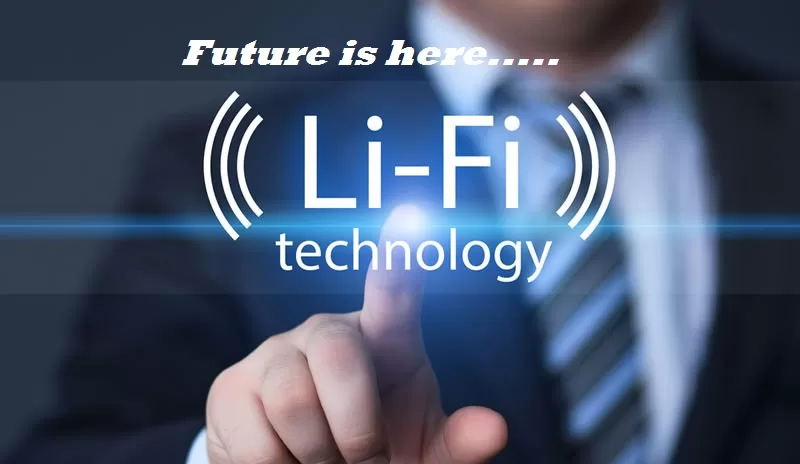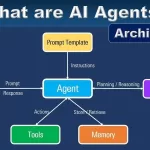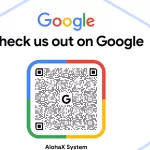Li-Fi or LiFi: What it is. Discover the technology that offers the Internet through light.
This type of wireless communication was first heard of in 2011. Research is still ongoing, exploring its potential applications in the home. Be enlightened by a technology that’s much faster and more secure than Wi-Fi.
Nowadays, we can’t imagine a world without a connection. We crave broadband whether through cable ( fiber optics ), radio waves ( Wi-Fi , 5G ,6G , WiMax ), or satellite . But what if I told you there’s another way to connect to the internet other than these options? I’m referring to Li-Fi or LiFi. , a technology that allows us to connect to the Internet through light! Yes, you read that right. It’s interesting, isn’t it? In this article, we’ll tell you what it consists of, its history, and what its advantages and disadvantages are.
A brief history of Li-Fi technology
Li-Fi is a data transmission system using visible light, or VLC (Visible Light Communication). It was Harald Hass , Professor and Chair of Mobile Communications at the University of Edinburgh, who first coined the term in July 2011 : Li-Fi, an acronym for Light Fidelity .
The academic – considered the founder of this technology – proposed the possibility of establishing communication through LED bulbs (light-emitting diode) and photoreceptor devices, reaching speeds of about 10 Mbps. In his TED talk, where he mentioned this concept, he explained that the fidelity of light can be applied to traffic control systems that use car headlights or chemical manufacturing plants where radio frequency is too dangerous and could cause sparks in the antenna.
In addition to his talk, Hass co-founded pureLi-Fi, formerly pureVLC, an equipment manufacturer created to market Li-Fi products for integration with existing LED lighting systems.
In September 2013, the company launched the world’s first commercially available Li-Fi technology. The Li-1st marked the introduction of this groundbreaking wireless communication breakthrough and became the world’s first commercially available Li-Fi technology. Li-Flame , which launched in February 2015, claimed to be the first Li-Fi product that enabled mobile wireless communications. A year later, pureLi-Fi and Lucibel, a French lighting company, launched the world’s first industrialized Li-Fi solution , which was deployed in multiple locations, including Microsoft’s Paris headquarters.
In October 2017, the Li-Fi-XC system was launched . This device is a certified plug-n-play system that works with USB devices and is small enough to integrate into your next laptop, tablet, or smart device. And just in June, pureLi-Fi offered Li-Fi starter kits to academic researchers and also opened a channel program for IT resellers to add Li-Fi to their product portfolio.
An important milestone in the development of this technology was the approval by the IEEE (Institute of Electrical and Electronics Engineers) of 802.11bb as the first global standard for light-based communications . This event, which occurred in mid-2023, is decisive for the progress of this trend as it provides a globally recognized framework for its deployment.
In 2023, the IEEE approved 802.11bb, the first global standard for light-based communications.
pecifically, this certification defines the physical level specifications and system architectures. for wireless communication using light waves, lays the groundwork for the widespread adoption of Li-Fi technology, and paves the way for interoperability of Li-Fi systems with the Wi-Fi standard.
What it consists of and what it is used for
Li-Fi is a wireless optical network technology that uses LEDs as a medium for data transmission. In other words, it’s a light-based Wi-Fi that allows this medium to be used instead of radio waves to transmit information. This two-way system requires only a lamp with a chip to propagate the internet signal through light waves.
Thanks to it, we can connect to the Internet using the light from lamps, streetlights, or LED televisions. It’s much faster and more secure than Wi-Fi and doesn’t require a router to work; simply point your device at a light bulb to browse the Internet.
How Li-Fi works
This technology alters the frequency of visible light between 400 and 800 THz . To do this, it uses LED bulbs that flicker —they emit pulses of light containing data—at such a speed that they are undetectable to the human eye. An encoder is attached to the luminaire . The internet signal reaches this encoder, and the bulb turns on or off to transmit the data. The photoreceptor is placed in an area reached by the light, collects the information, interprets the data, and enables the connection. Or to put it another way: it works by modulating the light. emitted by the light source (the transmitter) and received by a photodiode (the receiver). The signals received from the transmitter are translated into usable data forms that are easily consumed by the end user. LiFi connections are typically confined within the space where they are provided due to the nature of visible light.
In concept, it could be like decoding Morse code, but at a much faster rate: millions of times per second . Li-Fi transmission speeds can exceed 100 Gbps, 14 times faster than WiGig (60 GHz), also known as the world’s fastest Wi-Fi.
This technology has also been tested with infrared rays , which allowed a download speed of 42.8 Gbps to be achieved, and in laboratories 224 Gbps have been achieved.

Why Li-Fi technology is important
Wireless data usage is increasing by 60% each year . This means that the radio frequency space is slowly becoming saturated , which could lead to a phenomenon called the ” spectrum crunch ,” explains Li-Fi Group. This crunch refers to the potential lack of sufficient frequency spectrum needed to support a growing number of devices, along with various government and private sector uses of radio frequencies within the broad spectrum allocated for different types of wireless communications. This poses challenges for wireless networks because it could negatively impact internet speeds.
LiFi devices
LiFi devices are devices that connect to the internet using LED or infrared light . These devices emit light pulses containing information. In turn, the receiving devices decode the light pulses and translate them into data. Thus, to connect to the internet, all you have to do is point a mobile device at a light bulb with a LiFi chip .
Advantages of Li-Fi
This innovative technology boasts significant advantages for data communication. Let’s look at the most important ones.
Faster
Although when this technology was proposed it was talked about as 10 Mbps, the truth is that as it began to be tested in the laboratory it managed to transmit at 224 Gbps and outside of them – in a real environment – at 1 Gbps . Obviously, much more than what was expected from a theoretical point of view. The use of light allows Li-Fi connections to occur almost instantaneously because light travels at extremely fast speeds . This results in faster data transmission and faster Internet connections, approximately 100 times faster than the speeds achievable by Wi-Fi, multiplying not only the speed and bandwidth of the latter, but also of 3G and 4G .
Li-Fi has a band frequency of 200,000 GHz compared to Wi-Fi’s maximum 5 GHz, making it up to 100 times faster, transmitting much more information per second.
What’s more, as we’ve mentioned before, Joanne Oh of Eindhoven University placed a series of infrared-transmitting antennas in a laboratory, which allowed her to reach 42.8 Gbps at a distance of 2.5 meters. . The waves were 1,500 nanometers long, making them invisible to the human eye. Multiple antennas with different wavelengths and angles could also be positioned to avoid interference.
But without reaching specific cases, the research being carried out by different technological research centers such as the German Fraunhofer Institute or the Shanghai Institute of Technical Physics are already working in a stabilized manner and in real environments with transfer rates of 1 Gbps (one gigabit per second) and studies indicate that a speed of 10 Gbps could be reached , that is, multiplying the current Wi-Fi speed by a thousand .
More bandwidth
The light spectrum is 10,000 times larger than the radio spectrum, which greatly increases its capacity to conduct and transmit data per second. This characteristic allows this technology to provide guaranteed bandwidth even during peak hours. It overcomes the challenges of network overload.
Li-Fi exceeds the saturation of the current radio frequency spectrum by 10,000 times.
Privacy and security
The nature of visible light is that it cannot penetrate opaque walls . This means that as long as rooms are covered by opaque walls, the light is confined within the space it illuminates, thus limiting the connection to the space it illuminates. This prevents unauthorized access to the Li-Fi connection, adding another layer of security to the network. That is, the attacker must have access to the light. and be illuminated by the same light as those they want to compromise, making this system a much more secure technology than a Wi-Fi network.
In short, since it is a point-to-point communication and since light cannot pass through partitions, it cannot be attacked.
Walls block light, so a more secure data transfer will be provided.
Low latency
Li-Fi enables the development of solutions for sectors and applications where large amounts of information need to be transferred quickly, thanks to its very low latency. In fact, its response time is 740 µs compared to 2,423 µs for Wi-Fi.
Sustainable
Another advantage of Li-Fi is sustainability. Currently, these devices are connected to power 24/7. Furthermore, in the near future, it has been estimated that we will be able to transmit data via solar energy. This means that people without internet access or with limited electricity resources will now be able to connect to the web wirelessly.
Cheap
Precisely because Li-Fi employs VLC technology, which in turn makes use of high-efficiency LED bulbs, users can enjoy lower costs in terms of energy consumption. . Furthermore, they only require functioning LED lights, which are already available in most homes and other establishments at affordable prices, allowing for additional savings in terms of installation costs.
The operation of Li-Fi technology will lead to cost savings , as homes and, especially, workplaces will be able to do away with electronic devices such as routers, modems, signal repeaters, wave amplifiers, and antennas. These devices, which are currently connected to the power grid 24/7, would no longer consume electricity and their function would be replaced by an LED light bulb, which in most cases is already on during work hours, which would not entail any additional cost.
More accessible
In addition to being more economical, it is more accessible , as any light fixture can easily be converted into an Internet connection point, as all that is required is the connection of a Li-Fi transmitter.
Positioning
Lifi also has the advantage of allowing indoor positioning and geolocation .
Without interference
LiFi technology has zero radio frequency interference with other devices. How is this possible? Because these systems can use the entire visible light spectrum . That is, they can emit in many wavelengths , which prevents different light sources from overlapping. As long as the receiver is trained to detect a particular wavelength, there won’t be any problems with other light sources. This can be useful for providing network connectivity in areas susceptible to electromagnetic interference, such as hospitals and airplane cabins, to name a few. In other words, it doesn’t couple with other systems or compromise transmissions from airplanes, ships, etc.
In contrast, third- or fourth-generation Wi-Fi or mobile networks have limited capacity and become saturated when the number of simultaneous users increases. When they become congested, speeds decrease and the connection can even be interrupted.
Disadvantages of Li-Fi
Although Li-Fi has many advantages, it also has drawbacks. One of them is coverage . Since it can’t penetrate walls, the signal’s range is limited by physical barriers .
Obviously, to have a connection, you need light . For the system to work, the photoreceptor that detects the number of times the light bulb turns on and off must have direct access to light. Simply covering the photoreceptor with any object will leave it in darkness and, therefore, cut off the connection. If this photoreceptor is connected to a laptop and there are no obstacles in its path to the light, there won’t be a problem, but if it’s connected, for example, to a cell phone and we put the phone in a backpack, purse, or pocket, we literally lose connection.
With Li-Fi, the light source must be constantly on to provide access to the network.
Likewise, to cover a space—an office, a home, etc.—with a connection, a large number of light bulbs are required . Light cannot pass through walls, so several bulbs with their respective encoders must be placed throughout the rooms and kept on. To address this issue, experts are considering dimming the light to the point where it’s not bothersome or using infrared light.
Because Li-Fi connections rely on light to transmit data, they become very susceptible to external interference. Photodiodes are capable of capturing light from competing light sources, such as sunlight and other forms of lighting. This could create noise inside the receiver and cause network disruptions . In most Li-Fi systems, an optical filter is installed in the photodiode devices to filter out noise so that the receiver can only capture signals coming from the transmitter.
However, its biggest drawback comes in the form of infrastructure (or lack thereof). Since Li-Fi technology is a relatively new concept and is currently in its introductory stages, the infrastructure needed to deploy the technology on a large enough scale is still virtually nonexistent. This means that it will still be a long time before the general public can enjoy Li-Fi technology .
Li-Fi vs Wi-Fi which is better?
Although Li-Fi and Wi-Fi are both wireless communication technologies , they have many differences. The former transmits data using light sources (currently LED bulbs), and the latter uses radio waves with the help of a router. But which is better? Each has its pros and cons:
While LiFi allows working with a higher bandwidth and is free from electromagnetic interference , working better in high-density environments. , Wi-Fi uses certain bands, causing connections to come together in a reduced bandwidth and causing interruptions or cuts.
However, Li-Fi can’t pass through walls, but it can pass through seawater . This is the opposite of Wi-Fi, which passes through walls, but not water.
As for coverage , Wi-Fi reaches about 32 meters, a distance that varies depending on the transmission power and antenna type. Li-Fi stays at about 10 meters.
In terms of speeds , Wi-Fi ranges from 11 to 300 Mbps, while Li-Fi has even reached speeds exceeding 200 Gbit/s. Although this figure has been achieved, as we’ve explained in previous tests, the most widely accepted speed is 10 Gbit/s.
ISSUE OF SPECTRUM
The radio spectrum
Wi-Fi operates within the radio spectrum . The radio spectrum is part of the electromagnetic spectrum that spans frequencies from 3 Hz to 3,000 GHz . Waves emitted within this frequency range, called radio waves, are widely used, especially in telecommunications, making it prone to interference at various frequencies. Therefore, the generation and transmission of radio waves is strictly regulated by national laws in coordination with the International Telecommunication Union (ITU).
The visible light spectrum
Unlike using radio waves, Li-Fi uses visible light. This allows Li-Fi to access a wider range of available frequencies, as the visible light spectrum is 10,000 times larger than the entire radio spectrum . The visible light spectrum covers frequencies from 430,000 to 770,000 GHz and colors from near ultraviolet to near infrared .
Given all this, we can say that
Li-Fi will not be a replacement for Wi-Fi technology in the short term , but rather a complement to it, especially in high-density environments that require more speed and zero interference in connections.
LiFi is not designed to replace Wi-Fi, but rather to complement it, offering solutions in areas where this wireless network may be less effective or secure.
Not surprisingly, most of the existing infrastructure has been built to accommodate RF technology, so it would be very expensive and tedious to replace it to make way for newer technology.
Application of LiFi technology
LiFi technology finds applications in countless environments. In addition to conventional connectivity in homes and offices, this technology has great potential for use in other sectors.
In healthcare , LiFi ensures the secure transmission of sensitive patient data, mitigating the risk of data breaches prevalent in radio-based systems. Some experts on the subject suggest the possibility of implementing this technology for surgeries, medical equipment control, or the automation of procedures, among other things.
In education , institutions can leverage Li-Fi’s capabilities to facilitate a more interactive and engaging learning environment, free from the limitations of conventional internet connections. In congested environments such as educational institutions or libraries, replacing Wi-Fi with Li-Fi would help improve connectivity .
In industrial environments , LiFi improves operational efficiency by providing reliable, high-speed connectivity in areas prone to electromagnetic interference.
In both the transportation and aviation sectors, its implementation presents interesting options. Airlines generally prohibit cell phone use during flights because it can affect aircraft performance. This could change in the future with LiFi, as it is a technology that does not interfere with radio frequencies .
In retail , stores, supermarkets, and other retail establishments could benefit from the possibilities of Li-Fi. Illuminating a product could provide detailed information, as well as advertising, offers, or coupons.
And, of course, this technology also has a place in the domestic sphere—making smart homes a reality —as well as in public Wi-Fi.
What is the current state of Li-Fi development?
Li-Fi is still a technology in its testing phase. Although we are increasingly aware of projects to bring this system to the consumer, the truth is that, at this writing, its use is limited to certain use cases, primarily businesses and professional markets such as hospitals, airports and airlines, and underwater operations.
Since its inception, various trials have been conducted , each time increasing the speed and performance of this technology. Its application to IoT devices and their light-based communications is even being studied, such as the ENLIGHT’EM project , an initiative launched by the Imdea Networks Institute in 2019 .
In fact, we can say that LED lighting is currently being tested in offices around the world , and the aeronautical industry is already working on solutions for integrating it into commercial aircraft. That said, it’s likely that we could soon see real-life use in our homes.
The future of Li-Fi as a technology
Experts predict a promising future for Li-Fi, beyond the industrial applications in which it is currently being tested. Looking ahead, its arrival in homes is anticipated, thanks to the push for smart cities—with lighting projects, for example—and the development of smart homes and buildings . In this context, it is believed that future home and building automation will depend on Li-Fi to be fast and secure.
What’s more, according to the Global Market for Li-Fi Technology Analysis and Forecast 2018-2028 , the rise of mobile devices and the growing demand for higher-bandwidth systems are expected to drive its development over the next decade. This report estimates that the global market will reach a value of nearly $36 billion by 2028 , with a compound annual growth rate of 71.2% over the next 10 years. The Asia-Pacific region will lead global growth through 2028, replacing Europe, which held the lead in 2017.
According to other sources, such as Mordor Intelligence , which is conducting a study on the progress of this technology from 2024 to 2029, growth will be 63%, with North America being the largest market, but Asia-Pacific experiencing the fastest growth. By 2024, the Li-Fi market size is estimated at $1.72 billion. and is expected to reach $19.79 billion by 2029.
Business Research Insights also highlights that this industry is expected to reach $4,515.39 million by 2031. , with a CAGR of 22.55% during the forecast period.
Although the figures don’t match because some research considers different components of this technology, what’s clear is that Li-Fi’s potential is enormous . We’ll see how it evolves in the coming years.






